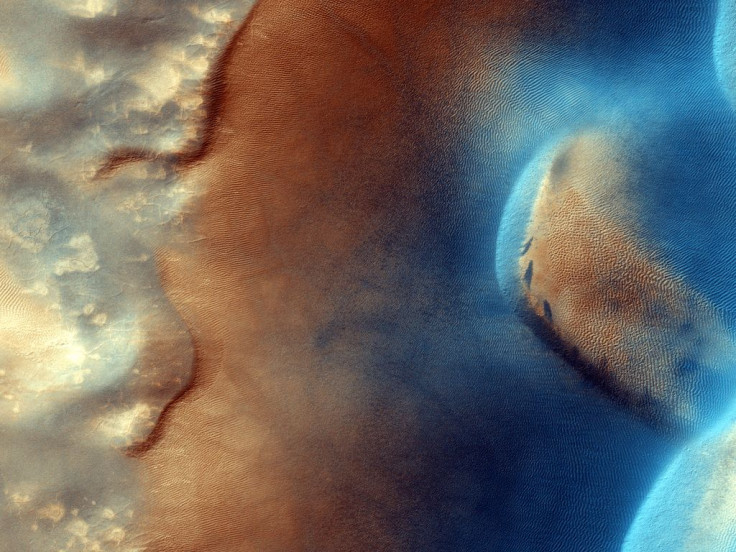Mars Curiosity Rover Reveals Martian Atmosphere Has Changed Over Time, May Support Life In Future

When the Curiosity rover landed on Mars in August 2012, anticipation of new information about Mars began to reach a fever pitch. Now, a year later, enough information has been collected to perform an analysis on the Martian atmosphere — could this new knowledge point to Martian life forms?
Atmospheric exploration has been a goal of the Mars Science Laboratory for some time, and is a major reason why it began the Curiosity expedition. The rover shows that the atmosphere on Mars is a mix of carbon dioxide, argon, nitrogen, oxygen, and carbon monoxide. The researchers have also established that carbon dioxide is the most abundant gas in the Martian atmosphere.
These findings mostly confirm the atmospheric sampling done by the 1976 Viking lander mission, and match the chemical fingerprints of Martian meteorites found on Earth. Details about argon and carbon variants found in the Martian atmosphere suggest that the planet may have lost a significant portion of its atmosphere early in its history. Varied information about argon and carbon levels in the atmosphere also reveals that Mars is still subject to atmospheric changes, as the Phoenix rover landing in 2008 discovered much lower levels of argon and carbon, while this current Curiosity mission, as well as the past Viking mission, finds higher numbers.
Changes in the levels of elements in the atmosphere reveal information about the planet itself. Because the levels of carbon dioxide and argon have fluctuated, it suggests that carbon dioxide is not necessarily a part of the atmosphere, but is merely there now — not always. Oxygen and water levels in the atmosphere have remained unchanged throughout each expedition, including the recent Curiosity mission. This suggests that we may not know everything about the Martian atmosphere.
Its dissipating carbon dioxide levels could indicate changes to what, or whom, may survive on the planet in the future, and what or whom may have survived on it in the past. Some organisms may use the carbon dioxide in Mars' atmosphere for survival, but if that carbon dioxide dissipates, could the new atmosphere support human life? It just may, if there's enough oxygen.
Ratios of hydrogen, carbon, and oxygen in carbon dioxide and water, according to Chris Webster — manager of the Planetary Sciences Instruments Office at NASA's Jet Propulsion Laboratory — and colleagues, indicate carbon dioxide and water reservoirs in the Martian air were established after the planet's atmospheric loss, about four billion years ago. Perhaps this change so long ago has not quite returned to normalcy.
Source: Webster CR, Mahaffy Pr, Flesch GJ, et al. Isotope Ratios of H, C, and O in CO2 and H2O of the Martian Atmosphere. Science. 2013.
Published by Medicaldaily.com



























